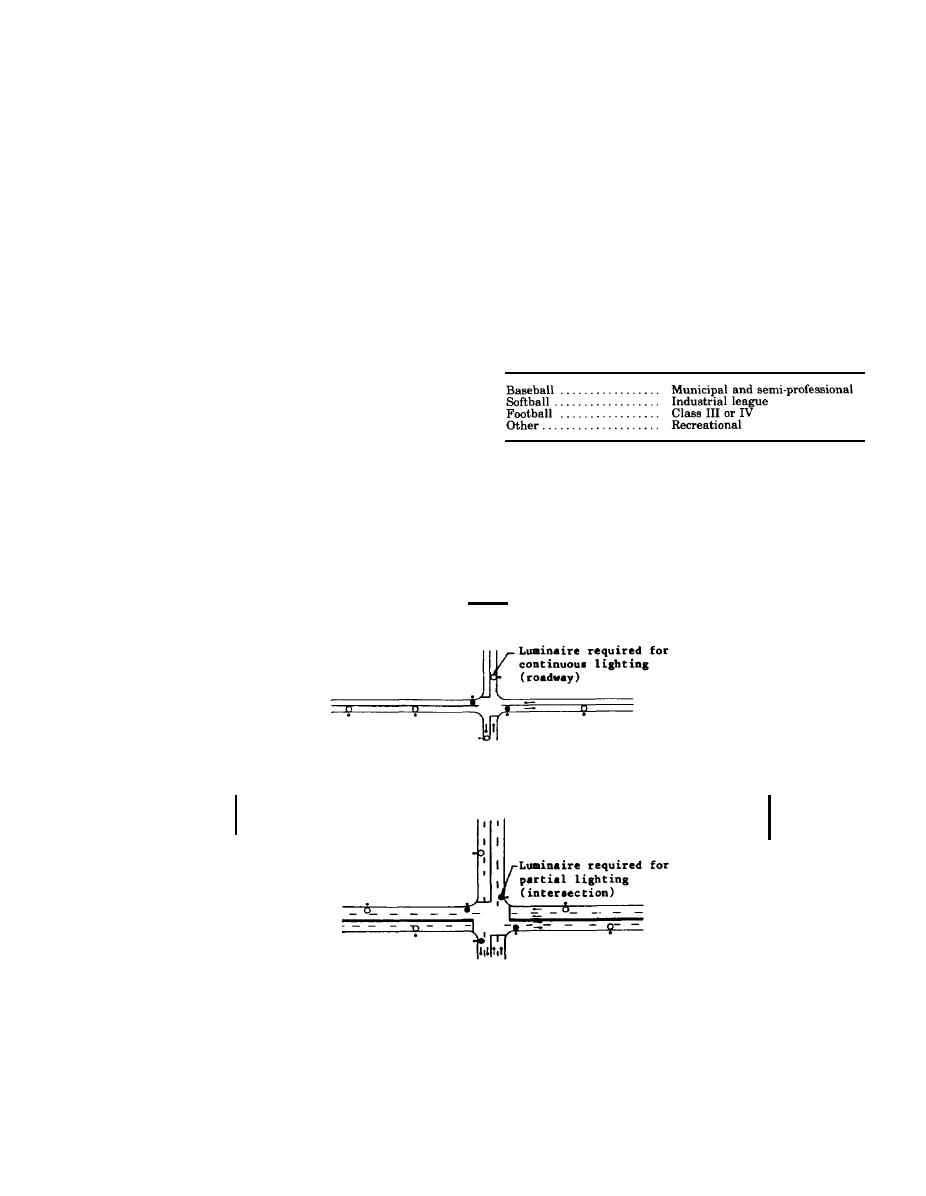
TM
5-811-1/AFJMAN
32-1080
10-3. Area lighting Design.
tally and to 20 percent at 80 degrees, whereas
cutoff reduces these two percentages by one half,
a. Illuminances. Illuminances will conform to
and noncutoff places no limitations. Semicutoff is
the requirements contained in the IES Lighting
selected as a compromise between noncutoff, where
Handbook for average maintained illumination,
high brightness in the upper part of the beam
except as follows:
produces both discomfort and disability glare, and
(1) Normal vehicle parking (including minor
cutoff, where lumen control necessitates closer
repair). Areas will have 5 lux (0.5 footcandles)
spacings to satisfy uniformity requirements.
average measured on lo-foot intervals, except
c. Placement. Luminaires will be located to pro-
where higher illuminances are approved. Often,
vide uniformity of illumination with an average-to-
roadway rather than floodlighting luminaires may
minimum spacing ratio not to exceed three to one,
be more suitable.
except for local residential streets where the ratio
(2) Sports lighting. The classifications shown
may be as high as six to one; actual requirements
in table 10-2 will be used.
will be checked against the IES Lighting Hand-
book guidelines. Luminaires for two and three
Table 10-2. Sports Lighting.
lane roads will be placed on one side of the street
for reasons of economy. Adequate coverage will be
provided so that security is not degraded. For four
lane roads, poles may have to be placed on both
sides of the road for uniformity. The illumination
(3) Storage areas. Where lighting is required
at intersections will be at least twice that required
for nighttime use, a maximum of 20 lux (2 foot-
on the intersecting roads. Figure 10-3 indicates
candles) will be provided, except where additional
that to meet this requirement, two luminaires are
lighting has been justified or is required by the
all that are necessary for two and three lane
Using Agency.
roads; but for intersections of four lanes or those
(4) Aircraft service areas. Aircraft service ar-
with merging traffic, four luminaires are neces-
eas will be illuminated in accordance with the
criteria given in TM 5-811-5.
sary.
TWO LANE R O A D S
FOUR LANE ROADS
a
This material is reprinted by permission of the Illumination Engineering
Society from IES RP-8- 1983 entitled "Standard Practice for Roadway
Lighting"
Figure 10-3. Intersection Lighting Placement.
10-4



 Previous Page
Previous Page
